How To Eliminate Mold From Your Home
When dealing with mold, it’s essential to adopt a structured approach for effective and lasting results. Begin by identifying mold-prone areas through a careful inspection, especially in moisture-heavy spaces like bathrooms, kitchens, and basements. For those in need of cleaning services in Merrimack, NH, understanding the essentials of mold prevention and removal can help keep indoor spaces safe and healthy. Using EPA-registered mold removal products, improving ventilation, and maintaining ideal humidity levels are vital steps. Additionally, addressing leaks promptly and considering professional help when needed will support a thorough mold management strategy for your home.
Identifying Mold Hotspots
During house cleaning, identifying areas susceptible to mold involves a detailed inspection, particularly in locations prone to moisture buildup, such as bathrooms, kitchens, and basements. Look for telltale signs, including water leaks, condensation on windows, or persistent musty odors. Bathrooms often accumulate moisture, so focus on areas surrounding sinks, tubs, showers, and toilets. In the kitchen, check for mold near sinks, dishwashers, and behind refrigerators. Basements typically have higher humidity, making them prone to mold in corners, walls, and ceilings. Additionally, investigate any water intrusion from outside sources, like foundation cracks or leaky pipes. Mold can also develop in hidden areas, such as behind drywall or under carpets, so inspect thoroughly to pinpoint all potential hotspots.
Proper Ventilation Techniques
Proper ventilation plays a key role in preventing mold growth by managing humidity and promoting air circulation. Start with exhaust fans in moisture-rich areas like bathrooms and kitchens to disperse damp air. Consider installing and maintaining air vents and duct systems to prevent moisture buildup and reduce condensation. Regularly open windows and doors to encourage fresh air circulation, which lowers indoor humidity. In high-moisture rooms, dehumidifiers can help sustain ideal humidity levels. Implementing these ventilation practices not only inhibits mold growth but also supports indoor air quality, creating a healthier living environment.
Choosing the Right Cleaning Products
Using the right cleaning products is essential for eliminating mold and preventing its recurrence. When choosing mold removal products, consider these points:
- EPA Registered: Use products registered by the Environmental Protection Agency to ensure they meet safety standards for mold removal.
- Antifungal Properties: Opt for products designed specifically with antifungal ingredients to target mold effectively.
- Non-Toxic: Choose products that are safe for household members and pets.
- Surface Compatibility: Ensure the product is suitable for the affected surface to avoid potential damage.
These considerations will help you select effective and safe cleaning solutions for mold removal in your home.
Implementing Preventive Measures
Prevention is key to keeping mold at bay. Start by maintaining indoor humidity below 60% using dehumidifiers in moisture-prone areas like bathrooms and basements. Ensure proper ventilation by installing exhaust fans in kitchens and bathrooms to reduce moisture. Regularly inspect for and repair any leaks in plumbing, roofs, or windows to prevent water from accumulating. Adding insulation to walls, attics, and floors can help reduce condensation. In high-humidity areas, use mold-resistant products like specialized paints and drywall. Additionally, clean and maintain HVAC systems to prevent mold growth in ductwork. Adopting these preventive steps can significantly reduce the likelihood of mold development.
Seeking Professional Help
When mold infestations are extensive, seeking professional help is often the best solution. Mold remediation specialists can efficiently identify the mold problem’s scope and employ the most effective removal methods. Here are some reasons why professional assistance is beneficial:
- Expertise: Professionals understand the different types of mold and the best methods for eradication.
- Advanced Equipment: Professionals can access tools like HEPA vacuums, air scrubbers, and specialized cleaning agents that support comprehensive mold removal.
- Safety Protocols: Mold specialists follow strict safety protocols to protect residents during removal.
- Preventive Advice: They can provide valuable recommendations for future mold prevention, focusing on moisture control and ventilation improvement.
Other related posts:









